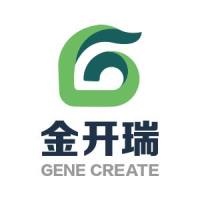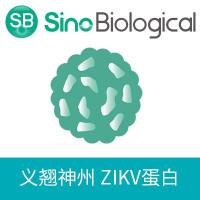Isolation and Characterization of Potential Cancer Stem Cells from Solid Human Tumors—Potential Applications
互联网
- Abstract
- Table of Contents
- Materials
- Figures
- Literature Cited
Abstract
Cancer stem cells (CSCs) are a subpopulation of cells within a heterogeneous tumor that have enhanced biologic properties, e.g., increased capacity for self?renewal, increased tumorigenicity, enhanced differentiation capacity, and resistance to chemo? and radiotherapies. This unit describes protocols to isolate and characterize potential cancer stem cells from a solid tumor. These involve creating a single?cell suspension from tumor tissue, tagging the cell subpopulations of interest, and sorting them into different populations. The sorted subpopulations can be evaluated for their ability to meet the functional requirements of a CSC, which primarily include increased tumorigenicity in an in vivo xenograft assay. Use of the protocols described in this unit makes it possible to study populations of cells that may have properties of CSCs. Curr. Protoc. Pharmacol . 63:14.28.1?14.28.19. © 2013 by John Wiley & Sons, Inc.
Keywords: cancer stem cells; xenograft assay; cell separation and sorting
Table of Contents
- Introduction
- Basic Protocol 1: Mechanical Dissociation of Primary Tumor or Mouse Xenografts
- Alternate Protocol 1: Chemical Dissociation of Primary Tumor or Mouse Xenograft
- Basic Protocol 2: Identification of Cells Based on Surface Marker Expression and Separation by Flow Cytometry
- Alternate Protocol 2: Isolating Cancer Stem Cells Using Magnetic Bead Separation
- Support Protocol 1: Using the EasySep “Do‐It‐Yourself”
- Basic Protocol 3: Isolating Cancer Stem Cells Based on Hoechst Dye Exclusion: The Side Population (SP)
- Basic Protocol 4: Determining Tumorigenicity of Putative Cancer Stem Cells
- Basic Protocol 5: Spheroid Assay of Putative Cancer Stem Cells
- Commentary
- Literature Cited
- Figures
- Tables
Materials
Basic Protocol 1: Mechanical Dissociation of Primary Tumor or Mouse Xenografts
Materials
Alternate Protocol 1: Chemical Dissociation of Primary Tumor or Mouse Xenograft
Materials
Basic Protocol 2: Identification of Cells Based on Surface Marker Expression and Separation by Flow Cytometry
Materials
Alternate Protocol 2: Isolating Cancer Stem Cells Using Magnetic Bead Separation
Materials
Support Protocol 1: Using the EasySep “Do‐It‐Yourself”
Additional Materials
Basic Protocol 3: Isolating Cancer Stem Cells Based on Hoechst Dye Exclusion: The Side Population (SP)
Materials
Basic Protocol 4: Determining Tumorigenicity of Putative Cancer Stem Cells
Materials
Basic Protocol 5: Spheroid Assay of Putative Cancer Stem Cells
Materials
|
Figures
-

Figure 14.28.1 Spheroid growth in a heterogeneous sample. Unsorted A2780 ovarian cancer cells were plated in serum‐free differentiation‐inhibiting medium on ultra‐low‐attachment plates. A spheroid of fused cells is noted to have a different phenotype than the majority of dividing cells, which remain attached as aggregates but not spheroids (A ). Cells plated as a single cell per well can sometimes form spheroids, which can be maintained for several weeks (B ). View Image -

Figure 14.28.2 CD555 expression in a heterogeneous population. Dissociated cells from a freshly collected solid tumor were subjected to flow cytometric analysis after exposure to anti‐CD555‐FITC antibody. Gating based on the negative control shows that 1.8% of cells are CD555‐positive. Side scatter plotted on y axis against intensity of FITC signal on x axis. View Image -

Figure 14.28.3 Platinum resistance in the CD555 population. Dissociated cells were sorted by flow cytometry based on CD555 expression, and plated into 96‐well plates, 2000 cells per well. After 6 hr, the medium was replaced with medium with increasing concentrations of carboplatin or vehicle. After 5 days, cells were subjected to MTT. CD555‐positive cells were much more resistant, demonstrating a carboplatin IC50 value of 82 nM, while CD555‐negative cells had an IC50 value of 4.4 nM. View Image
Videos
Literature Cited
| Literature Cited | |
| Dalerba, P., Cho, R.W., and Clarke, M.F. 2007a. Cancer stem cells: models and concepts. Annu. Rev. Med. 58:267‐284. | |
| Dalerba, P., Dylla, S.J., Park, I.K., Liu, R., Wang, X., Cho, R.W., Hoey, T., Gurney, A., Huang, E.H., Simeone, D.M., Shelton, A.A., Parmiani, G., Castelli, C., and Clarke, M.F. 2007b. Phenotypic characterization of human colorectal cancer stem cells. Proc. Natl. Acad. Sci. U.S.A. 104:10158‐10163. | |
| Dontu, G., Al‐Hajj, M., Abdallah, W.M., Clarke, M.F., and Wicha, M.S. 2003. Stem cells in normal breast development and breast cancer. Cell Proliferat. 36:59‐72. | |
| Galli, R., Binda, E., Orfanelli, U., Cipelletti, B., Gritti, A., De Vitis, S., Fiocco, R., Foroni, C., Dimeco, F., and Vescovi, A. 2004. Isolation and characterization of tumorigenic, stem‐like neural precursors from human glioblastoma. Cancer Res. 64:7011‐7021. | |
| Goodell, M.A. 2005. Stem cell identification and sorting using the Hoechst 33342 side population (SP). Curr. Protoc. Cytom. 34:9.18.1‐9.18.11. | |
| Goodell, M.A., Brose, K., Paradis, G., Conner, A.S., and Mulligan, R.C. 1996. Isolation and functional properties of murine hematopoietic stem cells that are replicating in vivo. J. Exp. Med. 183:1797‐1806. | |
| Herzenberg, L.A., Tung, J., Moore, W.A., Herzenberg, L.A., and Parks, D.R. 2006. Interpreting flow cytometry data: A guide for the perplexed. Nat. Immunol. 7:681‐685. | |
| Jordan, C.T., Guzman, M.L., and Noble, M. 2006. Cancer stem cells. N. Engl. J. Med. 355:1253‐1261. | |
| Lapidot, T., Sirard, C., Vormoor, J., Murdoch, B., Hoang, T., Caceres‐Cortes, J., Minden, M., Paterson, B., Caligiuri, M.A., and Dick, J.E. 1994. A cell initiating human acute myeloid leukaemia after transplantation into SCID mice. Nature 367:645‐648. | |
| O'Brien, C.A., Pollett, A., Gallinger, S., and Dick, J.E. 2007. A human colon cancer cell capable of initiating tumour growth in immunodeficient mice. Nature 445:106‐110. | |
| Petriz, J. 2013. Flow cytometry of the side population (SP). Curr. Protoc. Cytom. 64:9.23.1‐9.23.20. | |
| Reynolds, B. and Weiss, S. 1992. Generation of neurons and astrocytes from isolated cells of the adult mammalian central nervous system. Science 255:1707‐1710. | |
| Reynolds, B.A. and Weiss, S. 1996. Clonal and population analyses demonstrate that an EGF‐responsive mammalian embryonic CNS precursor is a stem cell. Dev. Biol. 175:1‐13. | |
| Robinson, J.P., Darzynkiewicz, Z., Dean, P.N., Orfao, A., Rabinovitch, P.S., Stewart, C.C. Tanke, H.J., and Wheeless, L.L. (eds.) 2013. Current Protocols in Cytometry. John Wiley & Sons, Hoboken, N.J. | |
| Siegel, R., Naishadham, D., and Jemal, A. 2012. Cancer statistics, 2012. CA Cancer J. Clin. 62:10‐29. | |
| Singh, S.K., Hawkins, C., Clarke, I.D., Squire, J.A., Bayani, J., Hide, T., Henkelman, R.M., Cusimano, M.D., and Dirks, P.B. 2004. Identification of human brain tumour initiating cells. Nature 432:396‐401. | |
| Steg, A.D., Bevis, K.S., Katre, A.A., Ziebarth, A., Dobbin, Z.C., Alvarez, R.D., Zhang, K., Conner, M., and Landen, C.N. 2012. Stem cell pathways contribute to clinical chemoresistance in ovarian cancer. Clin. Cancer Res. 18:869‐881. | |
| Strober, W. 2001. Trypan blue exclusion test of cell viability. Curr. Protoc. Immunol. 21:A.3B.1‐A.3B.2. | |
| Zhang, S., Balch, C., Chan, M.W., Lai, H.C., Matei, D., Schilder, J.M., Yan, P.S., Huang, T.H., and Nephew, K.P. 2008. Identification and characterization of ovarian cancer‐initiating cells from primary human tumors. Cancer Res. 68:4311‐4320. |









